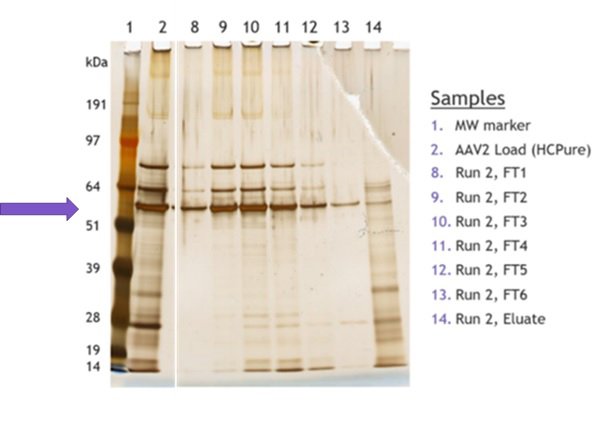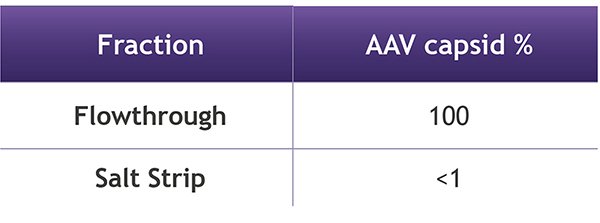HCPure™: A Solution to Host Cell Protein Contamination in AAV Workflows
Published date: 12 December 2023
Host Cell Protein (HCP) contamination is a major concern in biopharmaceutical products produced in living cells. While many recombinant protein therapies use feedstocks of Chinese Hamster Ovary (CHO) cells, many cell and gene therapies use vectors produced in human cell lines such as HEK293. One of the most common vectors produced in HEK293 cells is adeno-associated virus (AAV).
Purifying AAVs from HEK293 feedstocks presents several challenges. AAVs are commonly expressed in suspension cells where the viral particles are produced within the host cell, unlike recombinant proteins which are expressed directly into the cell culture supernatant. This necessitates a lysis step, increasing the complexity of the contaminants to be removed, which now include HCP, HCDNA, various additives, and cell debris.
One of the key impurities to remove from AAV preparations are empty AAV particles which do not contain the genetic payload. These adversely affect the immune response during treatment. The most common method of removing these chromatographically is by using an ion exchange step, but any charged impurities in the post-affinity pool make this step even more difficult.
To achieve the required level of purity, an intermediate polishing step that utilizes a broad range of binding interactions is necessary to capture and remove any contaminants present. The HCPure™ ligand operates on the basis of hydrogen bonding and hydrophobicity, providing an orthogonal mode of purification than affinity, cation exchange (CEX), or anion exchange (AEX).
Previously, HCPure™ has been successfully used in different antibody workflows, including CHO and E. coli expression systems. We have also evaluated the performance of HCPure™ in a cell and gene therapy application, specifically contamination removal from AAV capsids.
Purification of AAV2 capsids in HEK293 feedstock began with an affinity capture purification step using commercially available pan serotype AAV resin. However, this step alone did not provide material of adequate purity, necessitating further polishing to remove host cell impurities.
After primary capture, the elution pool was conditioned to pH 7.2 and 350 mM NaCl, the buffer used for long-term storage of the AAV capsids. The load of 5×10^13 viral particles was passed in flowthrough mode through the HCPure™ host cell protein clearance resin, which was packed in a 10 cm bed height, 10 mm SNAP® column, also available from Astrea Bioseparations.
Analysis was conducted using SDS-PAGE to compare the load sample and the flowthrough fractions (figure 1). As we can see, the flowthrough fractions are much cleaner, with the eluate fraction containing the majority of the low molecular weight bands and very little of the bands corresponding to the 3 viral proteins. The recovery from the column runs is excellent, with very little virus present in the eluate fraction. Analysis of the sample by ELISA showed 100% recovery of AAV2, with 0.9% detected in the low pH and high salt strip, which was within the margin of error for this analysis.

Fig 1. SDS-PAGE showing removal of contamination in each flowthrough volume and contamination free eluate.

Fig 2. AAV Capsid recovery in eluate and salt strip fractions.
Removing HCPs and maintaining product purity are critical to achieving effective therapeutic outcomes. Failing to effectively clear the final sample of host cell contamination can result in negative outcomes, including changes to therapeutic effectiveness and immunogenic responses in the patient. By using HCPure™ after an affinity capture step, host cell contamination can be effectively removed while still achieving high AAV capsid yields.
In summary, the production of AAVs from human cell lines presents challenges related to the removal of impurities, particularly host cell proteins (HCPs). HCPure™ offers a powerful solution to these challenges by utilizing hydrogen bonding and hydrophobicity interactions to capture and remove a broad range of contaminants. By implementing HCPure™ after an affinity capture step, researchers can achieve high yields of pure AAV capsids, free from host cell contamination. This is critical for the safety and efficacy of AAV-based gene therapies, ensuring that patients receive the intended therapeutic benefits without negative side effects.

